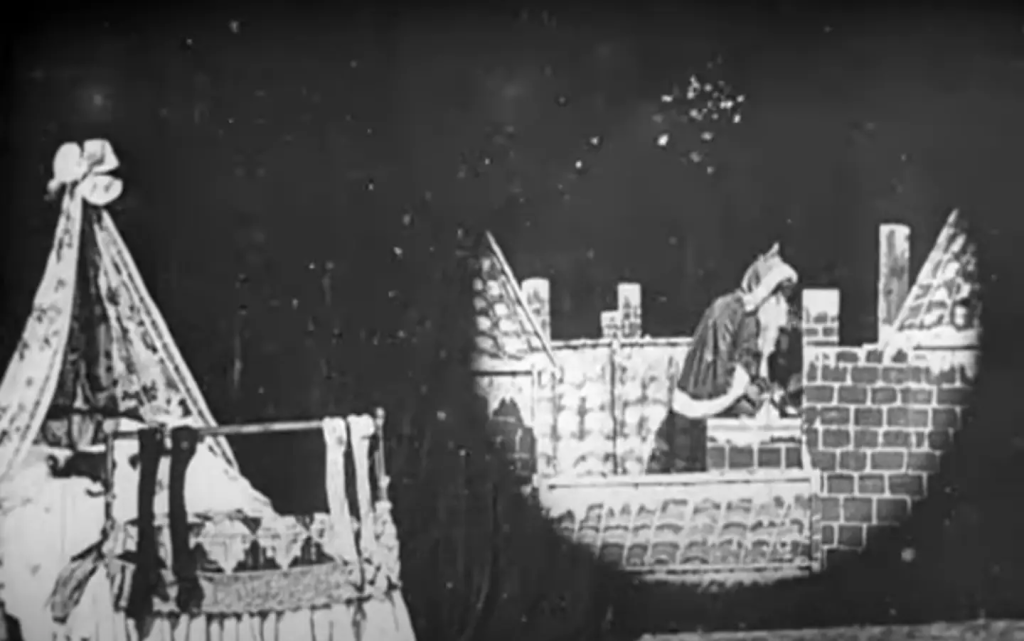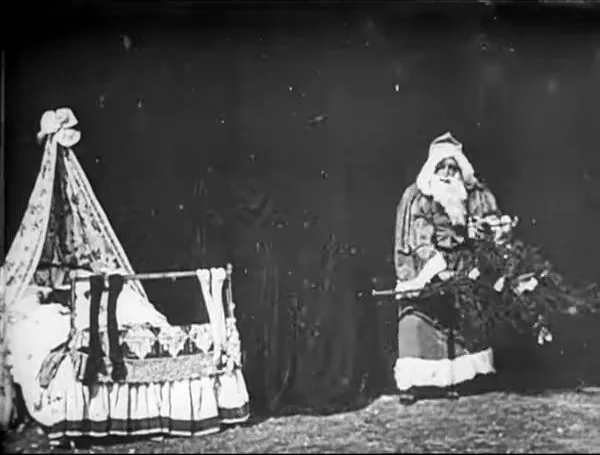When it comes to Christmas, there’s nothing like snuggling under a blanket, sipping hot cocoa, and diving into a lineup of festive films. From timeless classics like It’s a Wonderful Life to modern hits like Elf, Christmas movies are an essential part of the holiday season. But have you ever wondered how this tradition began? The very first Christmas movie ever made is now 126 years old, and surprisingly, you can watch it for free on YouTube! Let’s take a closer look at this cinematic gem and how it shaped the future of holiday films.
A Victorian Marvel: The Birth of Christmas Cinema

While most of us think of Christmas films as a product of the 20th century, their origins actually go back to the late 19th century. In 1898, British filmmaker George Albert Smith created Santa Claus, the world’s first Christmas movie. This short film, just over a minute long, is a testament to the magic of the holiday and the ingenuity of early cinema.
Smith, a pioneer in the film industry, crafted this masterpiece during the Victorian era—a time when Christmas traditions were flourishing. The film captured the essence of the season, bringing the mythical figure of St. Nicholas to life for audiences who had never seen anything like it before.
What Is Santa Claus (1898) About?
Though Santa Claus is only 77 seconds long, it tells a story that resonates to this day. The film begins with two children being tucked into bed by their nanny on Christmas Eve. As they drift off to sleep, Santa Claus makes his grand entrance, descending down the chimney to deliver gifts.
Using a stocking as his method of delivery, Santa works quietly so as not to wake the children. By morning, the kids awaken to discover the magic of Christmas morning, their stockings brimming with presents.
The plot is simple yet heartwarming, embodying the spirit of Christmas that continues to captivate audiences over a century later.
Why Santa Claus Was Groundbreaking
You might wonder what makes a minute-long, silent, black-and-white film so revolutionary. The answer lies in its innovative techniques and storytelling approach.
1. Advanced Filmmaking Techniques
At a time when films were little more than recordings of everyday life, Santa Claus broke new ground with its use of visual effects. George Albert Smith introduced parallel action—a technique that shows two scenes happening simultaneously. For example, viewers see Santa climbing down the chimney while the children sleep in their beds. This innovation was extraordinary for 1898 and laid the groundwork for narrative storytelling in cinema.
2. A Pioneering Narrative
Unlike other early films, which were often simple, unstructured clips, Santa Claus told a cohesive story. It transported viewers into the magical world of Christmas, proving that films could be more than just moving pictures—they could be a medium for emotional and imaginative storytelling.
A Glimpse Into Victorian Christmas Traditions

Beyond its technical achievements, Santa Claus provides a fascinating window into the holiday traditions of the Victorian era. The film reflects the customs of the time, including the importance of stockings, the joy of gift-giving, and the enduring legend of Santa Claus.
Watching this film is like stepping back in time. It’s a reminder that while technology and lifestyles have changed dramatically over the past century, the magic of Christmas remains timeless. Just like today, the Victorians cherished the idea of Santa Claus bringing joy to children, making this film a universal celebration of holiday wonder.
How to Watch Santa Claus (1898) Today
The best part? You don’t need to dig through old archives to watch this historic gem. Santa Claus (1898) is available for free on YouTube, making it accessible to anyone curious about the origins of Christmas cinema.
With its short runtime of just over a minute, it’s a perfect addition to your holiday festivities. Whether you’re a film enthusiast, a history buff, or just someone looking to soak in a bit of nostalgia, this film is a delightful way to connect with the past while celebrating the present.
Why Santa Claus Still Matters Today

What makes Santa Claus (1898) relevant in a world of CGI-laden blockbusters? Here are a few reasons this humble film continues to captivate audiences:
1. Historical Significance
Santa Claus is more than just a film—it’s a piece of history. It represents the earliest days of cinema and showcases the creativity of pioneers like George Albert Smith. Watching it offers a unique perspective on how far filmmaking has come in the last 126 years.
2. Timeless Themes
Despite its simplicity, the film’s message of generosity, joy, and holiday magic is universal. It reminds us that the heart of Christmas lies in the act of giving and the joy it brings to others.
3. A Refreshing Simplicity
In an age dominated by high-budget productions and dazzling special effects, Santa Claus is a refreshing reminder of storytelling at its purest. It’s proof that great stories don’t need elaborate visuals—they just need heart.
How Santa Claus Influenced Modern Holiday Films
While it might seem worlds apart from today’s holiday classics like Home Alone or The Polar Express, Santa Claus set the stage for all Christmas films that followed. It was one of the first to use cinema as a way to explore the magic of the season, and its influence can be felt in the narrative-driven holiday films we know and love today.
Filmmakers of every era owe a debt to pioneers like George Albert Smith, whose creative vision helped establish the storytelling potential of this medium.
A Holiday Tradition Worth Adding to Your List

Incorporating Santa Claus (1898) into your holiday movie lineup is more than just a fun activity—it’s a chance to celebrate the roots of Christmas cinema. It’s a brief but meaningful reminder of where the tradition began, and it offers a unique way to connect with the history of the holiday season.
Whether you watch it alone or share it with family and friends, this charming short film is sure to spark conversations and add a touch of nostalgia to your celebrations.
Conclusion: Honoring the Origins of Christmas Magic
Santa Claus (1898) isn’t just a film—it’s a treasure that bridges the past and present. Its groundbreaking techniques, heartwarming story, and historical significance make it a must-watch for anyone who loves Christmas or cinema.
So, as you sip your cocoa and enjoy the holiday season, take a moment to experience the world’s first Christmas movie. It’s free, it’s fascinating, and it’s a beautiful reminder that the magic of Christmas has been enchanting hearts for generations. Because some traditions, like Santa himself, truly are timeless.


